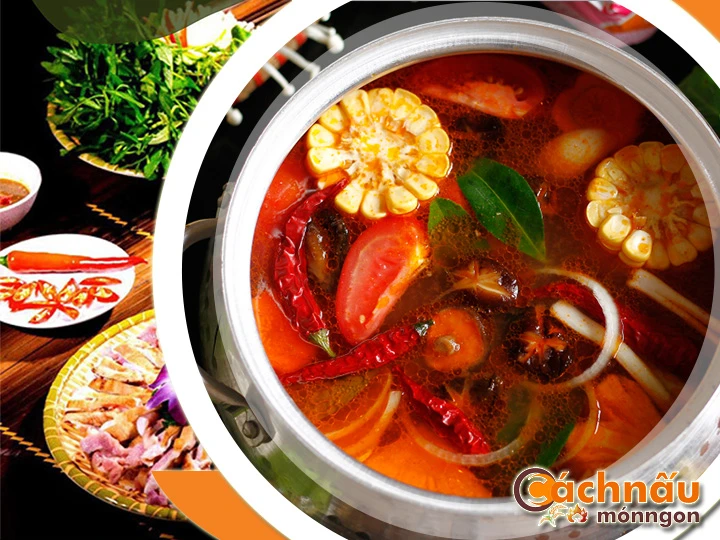This comprehensive guide explores the entirety you need to realize about rabbit hot pot, from its traditional beginnings to trendy versions, nutritional values, and step-by-step instructions for creating the excellent dining option at home. Whether you are a skilled chef or a novice cook, this guide will support and train you to master the art of rabbit hot pot.

EXPLORING THE ORIGINS AS WELL AS CULTURE CONCERNING BRAISED RABBIT DISH.
Rabbit hot pot represents a one-of-a-kind and historical dish with rich traditions in various regions. Its popularity stems not only from its savory flavor but also from its history and value.
1. Learning about the Past focused on Traditional rabbit cuisine.
- Early Beginnings: Hearty rabbit meal emerged in agricultural regions where rabbits were a prevalent, protein-rich food source. In ancient China, it was a cherished meal, particularly during special occasions.
- Expansion Across Areas: In Western countries like France, rabbit was traditionally used in broths, adapting into modern versions of hot pot as the dish became internationally recognized.
2. Rabbit Casserole embedded in Cultural Practices of East Asia.
- Across China: Known as 兔肉火锅 (Tù ròu huǒguō), rabbit hot pot is popular in spicy Sichuan cuisine, famous for its fiery flavors and typically served at festive occasions.
- Within Korea and Japan: While less common, rabbit hot pot is occasionally enjoyed as a herbal dish in South Korea, or taking cues from nabemono hot pot in Japanese cuisine, highlighting local greens and flavors.
- Across Vietnam: Although rabbit hot pot is uncommon in everyday meals, it is famous during festive events or in agricultural communities where rabbit meat is accessible. It is often enhanced by distinctive spices such as lemongrass, zesty ginger, and red chili, paired with fresh vegetables like kangkong, spicy greens, or aquatic greens. This dish is enjoyed for its distinct taste and nutritional richness, frequently relished at intimate gatherings.
Tại Việt Nam, tuy không phải là món ăn thịnh hành liên tục mỗi ngày, nhưng thường thấy trong các buổi lễ đặc biệt hoặc ở khu vực nông thôn, nơi có thịt thỏ dồi dào. Thường được tẩm ướp với các loại gia vị như sả, gừng tươi, và ớt, kết hợp với cải bẹ xanh. Món ăn này nổi bật trong các bữa tiệc nhờ sự đặc sắc trong hương vị và giá trị dinh dưỡng cao, thường là món ăn chính trong.
3. Stewed Rabbit integral to European Gastronomy.
- In France: Commonly made as a robust stew with wine reduction, herbs like rosemary, and vegetables like carrots and potatoes. Rabbit hot pot is a traditional recipe for special celebrations.
- Within Italy: The dish known as “Cacciatore”, featuring rabbit prepared with a tomato and wine base, is a inspiration for modern rabbit hot pots.
RECIPES AND TECHNIQUES FOR COOKING RABBIT HOT POT
Rabbit hot pot is a versatile dish that merges fresh ingredients, savory broths, and distinct techniques to create a rich and satisfying meal. Below are detailed insights into the primary methods and techniques to perfect rabbit hot pot.
Essential Recipe for Rabbit Hot Pot
* Required Ingredients:
- 1 whole rabbit (cut into pieces)
- 4 cups of broth (vegetable)
- Vegetables (potatoes)
- Spices and herbs (thyme)
- Seasonings (salt)
- Optional: side dishes for serving
* Method:
- Prepare the Rabbit: Clean and chop the rabbit into pieces. Season with salt, pepper, and a splash of soy sauce for half an hour to enhance the flavor.
- Make the Broth: Heat a vessel with a bit of oil. Fry garlic and ginger until fragrant. Add your preferred broth and bring it to a boil.
- Add the Rabbit: Add the rabbit pieces into the pot and let them cook slowly on low heat for around half an hour until tender.
- Add Vegetables: Add your preferred vegetables and cook until they are softened but still bright.
- Serve: Transfer the hot pot to a portable stove. Serve with side dishes and extras like rice or noodles.
Key Techniques for Cooking Rabbit Hot Pot
- Marination:
. Marinate the rabbit with a combination of salt, pepper, and spices to enhance its original taste.
. For more depth, use cooking wine, soy sauce, or a mix of fresh herbs like rosemary and thyme.
- Building Layers of Flavor:
. Start by simmering the rabbit in the broth to extract its essence.
. Layer vegetables strategically based on their required time.
- Perfect Timing:
. Avoid cooking too long the rabbit, as it can lose tenderness.
. Test for completion by checking if the meat is fork-tender.
- Taste Customization:
. Perfect the flavor by adding extra herbs as needed.
. Experiment with different types of broths, such as spicy Sichuan-style variations.
Secrets to a Perfect Rabbit Hot Pot
- Quality Matters: Always choose locally sourced rabbit and in-season greens for the best results.
- Balance Flavors: Be aware of the sweetness in the broth. Try and adjust frequently during cooking.
- Creative Accompaniments: Offer a range of sauces like spicy garlic dip or savory soy mixes to elevate the dining experience.
- Presentation: Use a tabletop cooker or serve the hot pot as a focal point to foster interaction.
By perfecting these recipes and techniques, you can create a rabbit hot pot that’s both flavorful and visually appealing, making it a standout dish for any dining công thức lẩu thỏ experience or event.